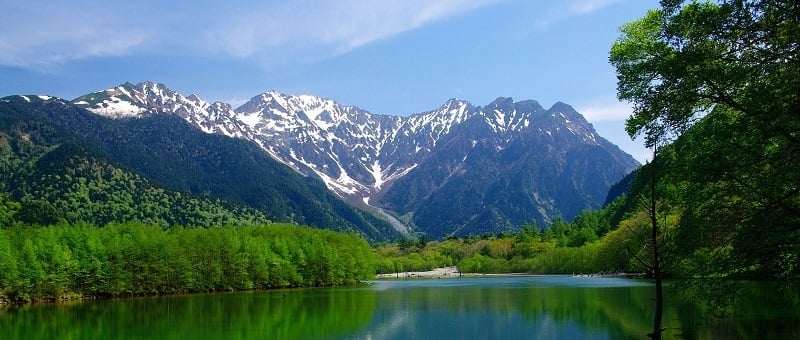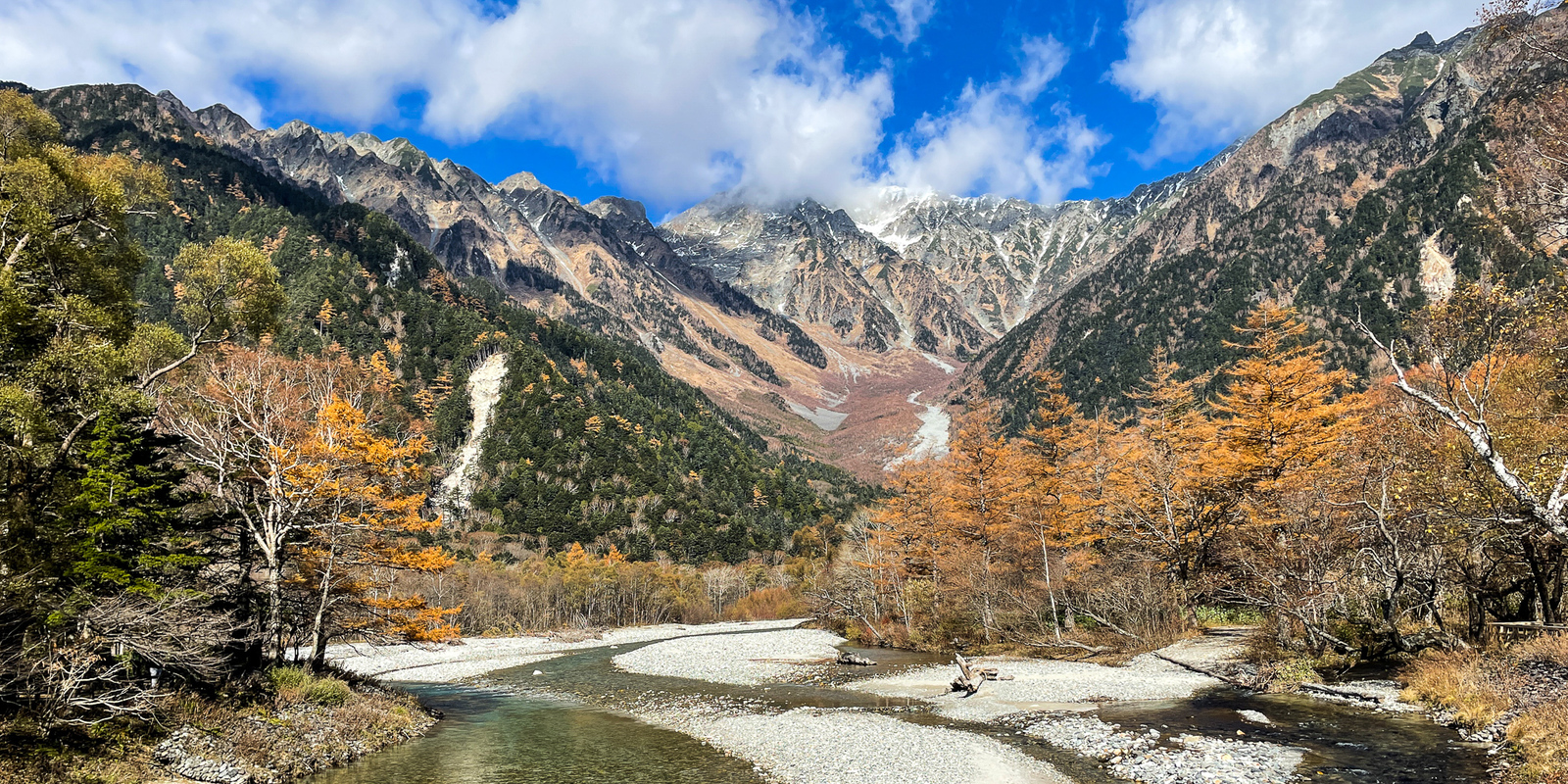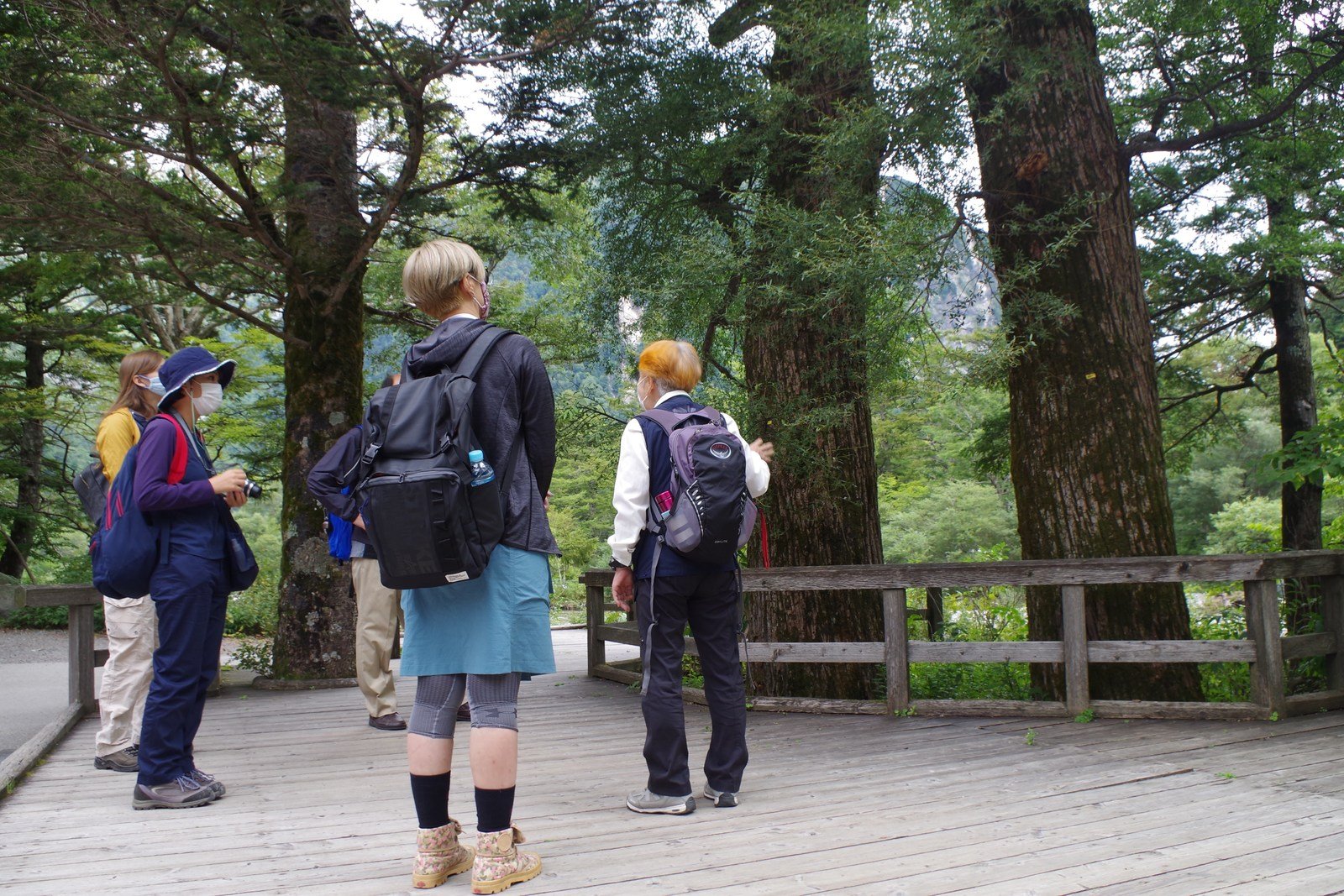
Kamikochi is known throughout Japan, and more recently abroad, for its incredible scenery of Japan’s pristine nature. The view from the Kappa Bridge, facing the Hotaka mountain range and Dakesawa Cirque, is iconic. And the hours of nature trails that follow the Azusa River deep into the mountains hide all kinds of precious and majestic sights.
You could spend all day, or several days, wandering around Kamikochi. The relatively flat trekking trails around the basin are well-maintained and easy to walk on. There are trailheads leading up to the peaks of the alps, from short hikes to multi-day trips. If you wanted, you could even just admire the amazing view from a café beside the Kappa Bridge, just five minutes from the bus terminal.
But for a closer look into the beauty of Kamikochi, there’s no better way to explore than with the help of a knowledgeable nature guide.
See More of Kamikochi on a Guided Tour
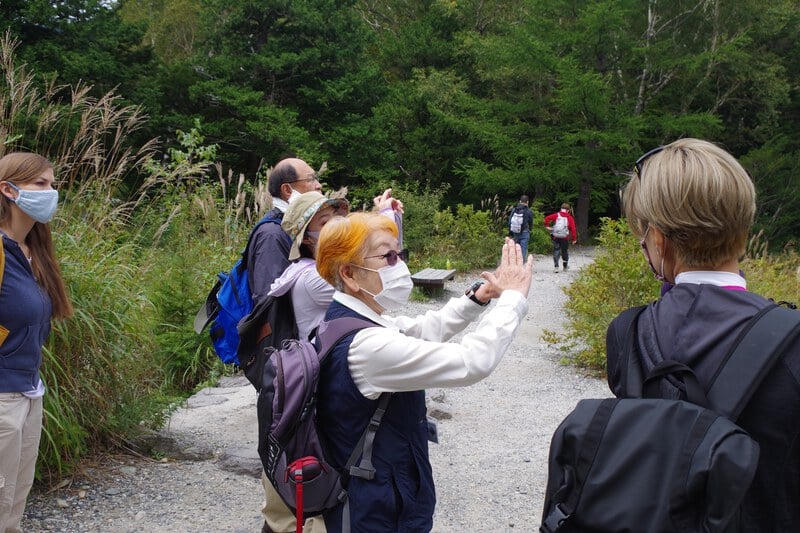
Kamikochi is full of wonder. Spectacular viewpoints are hidden where you’d least expect them, and fascinating flora grow in abundance, not easily spotted by the untrained eye. You can certainly enjoy Kamikochi without a guide, but with their help, you can learn much more about Kamikochi, its nature and its history.
There are a few guide services operating in Kamikochi, including Five Senses and the Shirakabaso Nature School. They offer several different private and group tours around the basin. (See here for mountain climbing guides.)
Our Walk around Kamikochi with Takehara-san
The Kappa Bridge
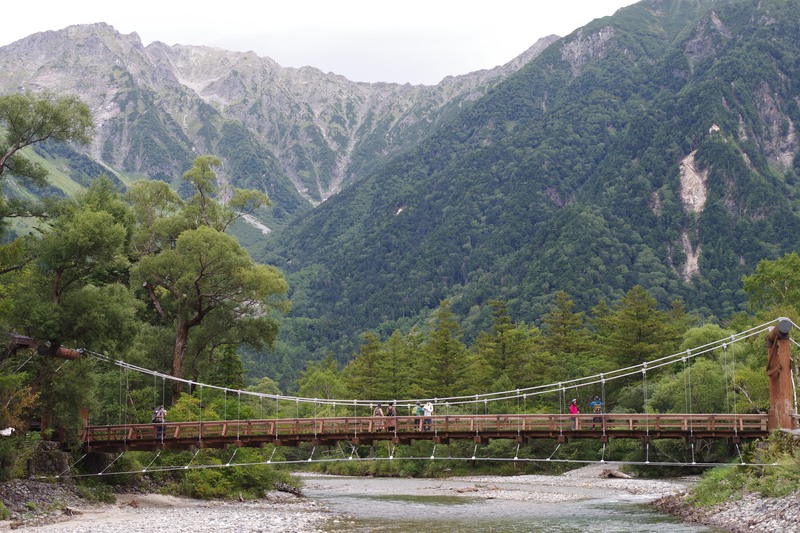
Just a short five-minute walk from the Kamikochi bus terminal is one of Kamikochi’s representative sights: the Kappa Bridge. Straddling the Azusa River, the bridge faces the Hotaka mountain range and Dakesawa Cirque. Around the bridge are several of Kamikochi’s hotels and restaurants, and most guided tours begin from here.
We met with our guide, Takehara-san, inside the Shirakabaso Hotel just across the bridge. After a short introduction and overview of our route for the day, we were off.
While I’ve personally been to Kamikochi more times than I can count, I had never taken the time to observe the forests and plants here closely, spending most of my time staring at the mountains above.
Takehara-san, however, was ready to point out Kamikochi’s indigenous trees, shrubs, and flowers.
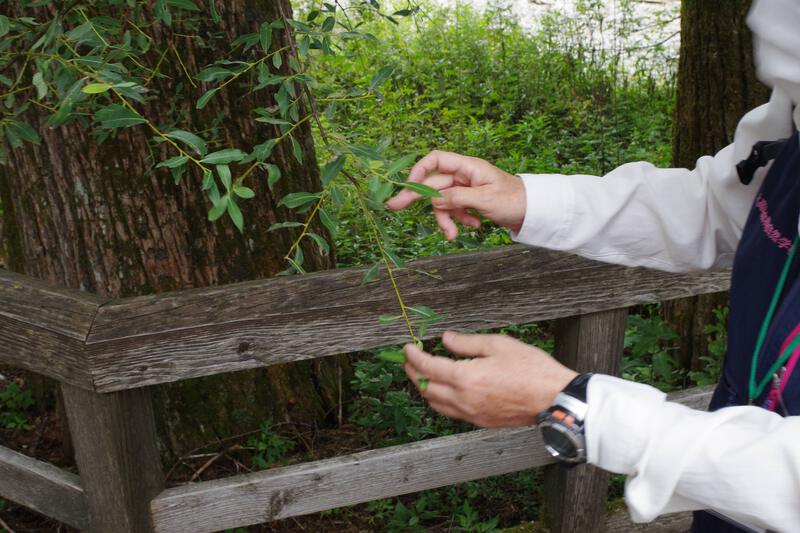
At every turn, there was something new and interesting to learn about. There were Kessho-yanagi willow trees, whose young branches turn crimson during autumn and powdery white during winter. Fragrant katsura whose aroma grows sweeter and sweeter as their leaves turn yellow and drop. Patches of wild wasabi wading in cool, shaded streams.
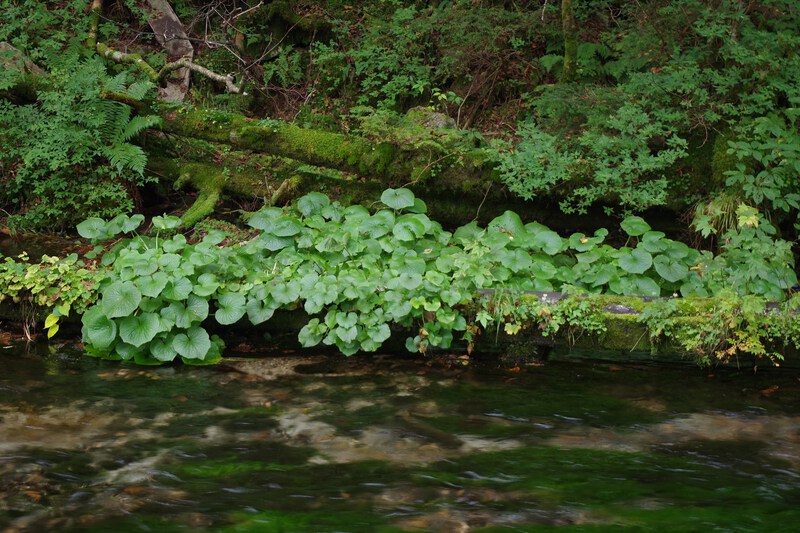
Konashidaira Campground
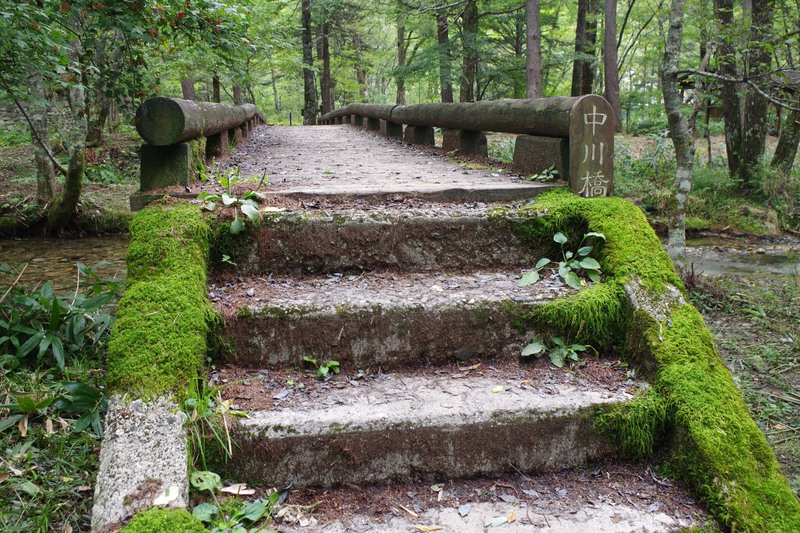
After a short walk along the forest path, we reached Konashidaira Campground. It is one of the area’s most popular campsites thanks to its close proximity to the bus terminal, excellent view of the mountains, and last but not least, its plentiful stocks of beer and sake.
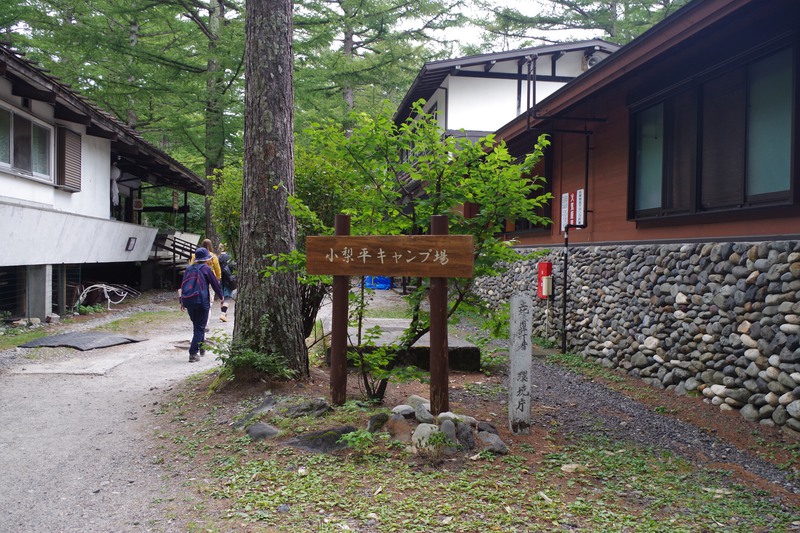
A few tents were already set up during our visit. Considering how compact and light they were, their owners were probably seasoned hikers already off on a day trip into the alps.
The path continued for several more kilometers, occasionally yielding to massive boulders and crossing streams. At a bend in the trail the trees parted way to reveal a long bed of stones by the river. Up above were the craggy cliffs of Mt. Myojin.
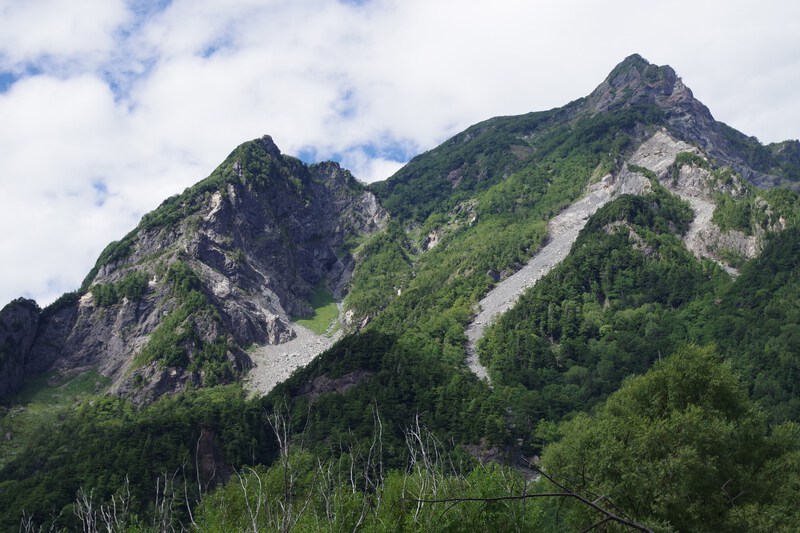
We stopped here for lunch and enjoyed the scenery while Takehara-san told us more about the mountain and the sacred pond beneath it, where we would be stopping next.
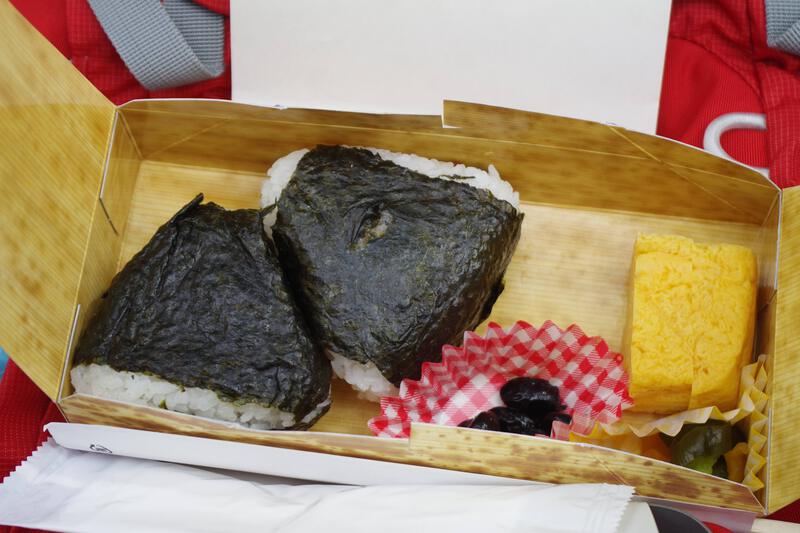
Myojin Pond
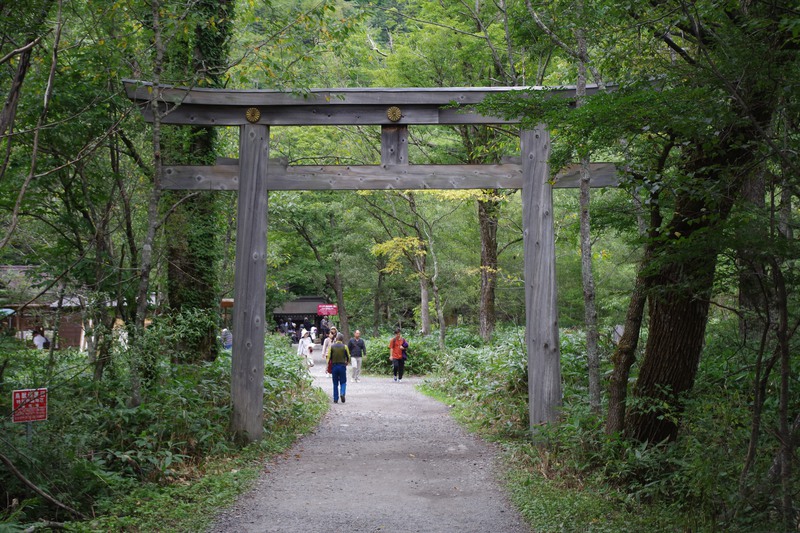
Myojin Pond is part of Hotaka Shrine and sits at the base of Mt. Myojin. This small and serene body of water is the venue for numerous religious rites throughout the year, dedicated to the deity Hotaka Minomikoto.
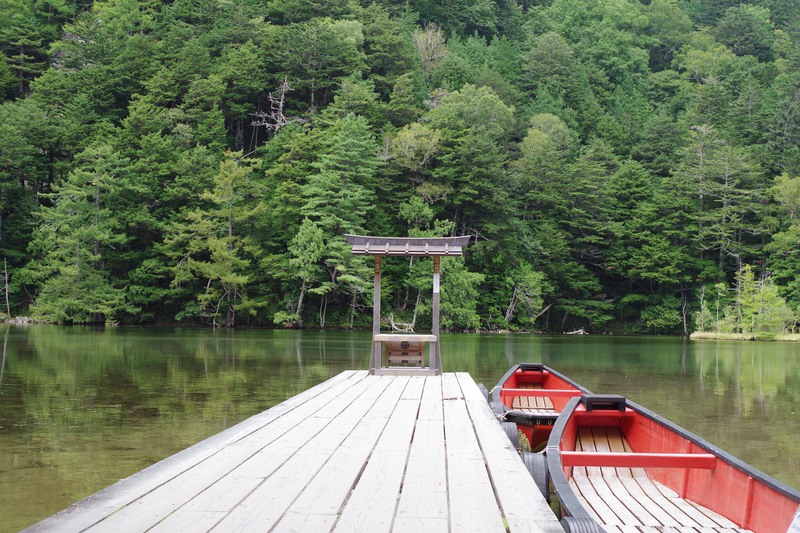
Passing through a large torii gate and entering the shrine (for a small fee), we were greeted by a short pier that stretched over the surface of the pond. Moored to it were several crimson-painted boats, which are ridden by the priests of Hotaka Shrine during the Ofune Festival.
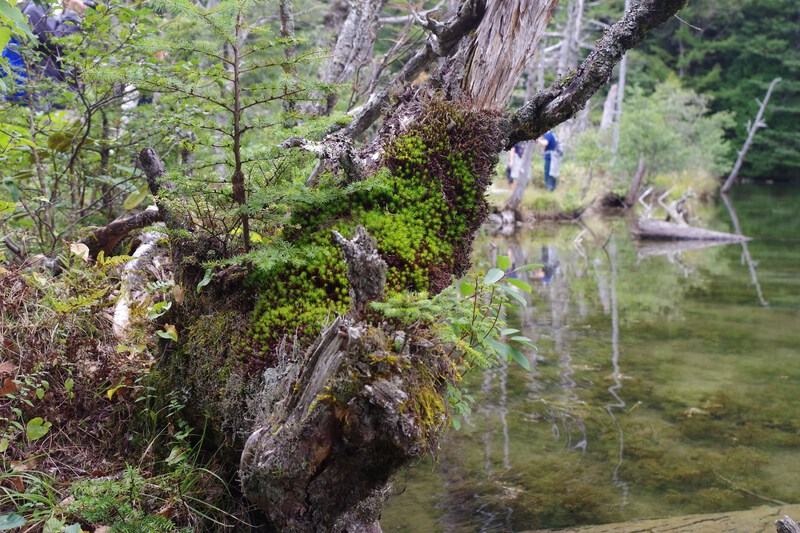
Myojin Pond is also known as Kagami-ike, or “Mirror Pond.” Early in the morning, you can see clear reflections of the mountains and forests in its surface, or occasionally, a mysterious fog that sits just above the water.
Dakesawa Marsh
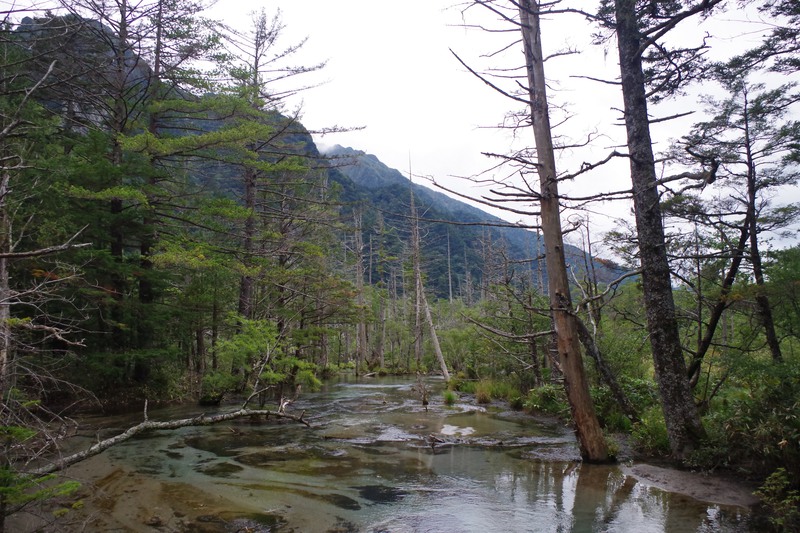
After leaving Myojin Pond, we headed back towards the Kappa Bridge along the other side of the river. The trail was interrupted by numerous short bridges crossing streams and soon became a boardwalk as the forest floor gave way to wetlands. Trees became sparse. Eventually, we could see the peak of Mt. Roppyakusan looming above Dakesawa Marsh.
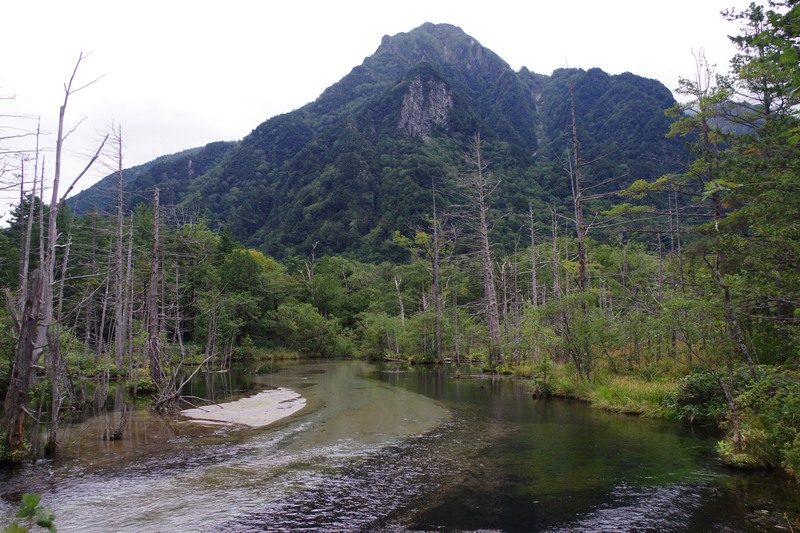
Takehara-san tells us that the water here wells up from countless springs all around the valley and feeds into the Azusa River. The marsh is very close to one of these springs, and the water is crystal-clear.
Another 30 minutes or so of walking and we were back at the Kappa Bridge where it all began. The peaks of Mt. Hotaka that we had seen in the morning were now covered by the clouds.
In Conclusion
While the views of the Japanese Alps alone are reason enough to visit Kamikochi, a guided tour gives you a better picture of the area, its nature and its history.
On our trip to and from Myojin Pond, Takehara-san told us all about Kamikochi’s flora and fauna, from trees with blushing branches to the habits of Japan’s indigenous monkeys. She directed our attention to delicate plants and berries that we would have missed had we forged straight ahead on our path.
It’s easy to become hypnotized by the trail, walking straight ahead and focusing only on the destination. As if wearing blinders, we don’t notice all of the beauty around us. A good guide will help take them off!

